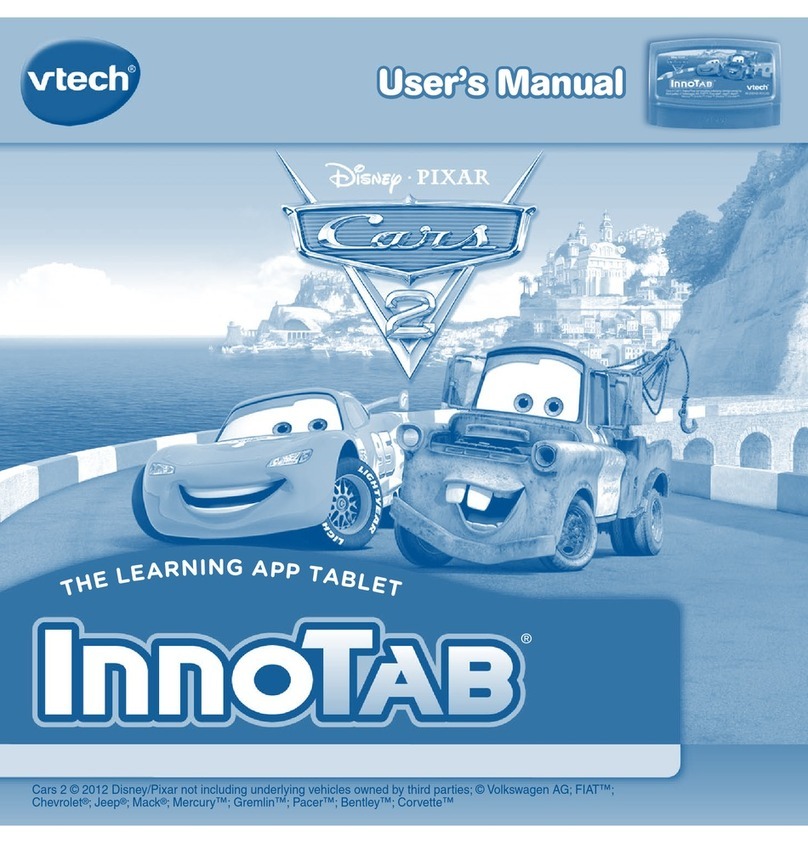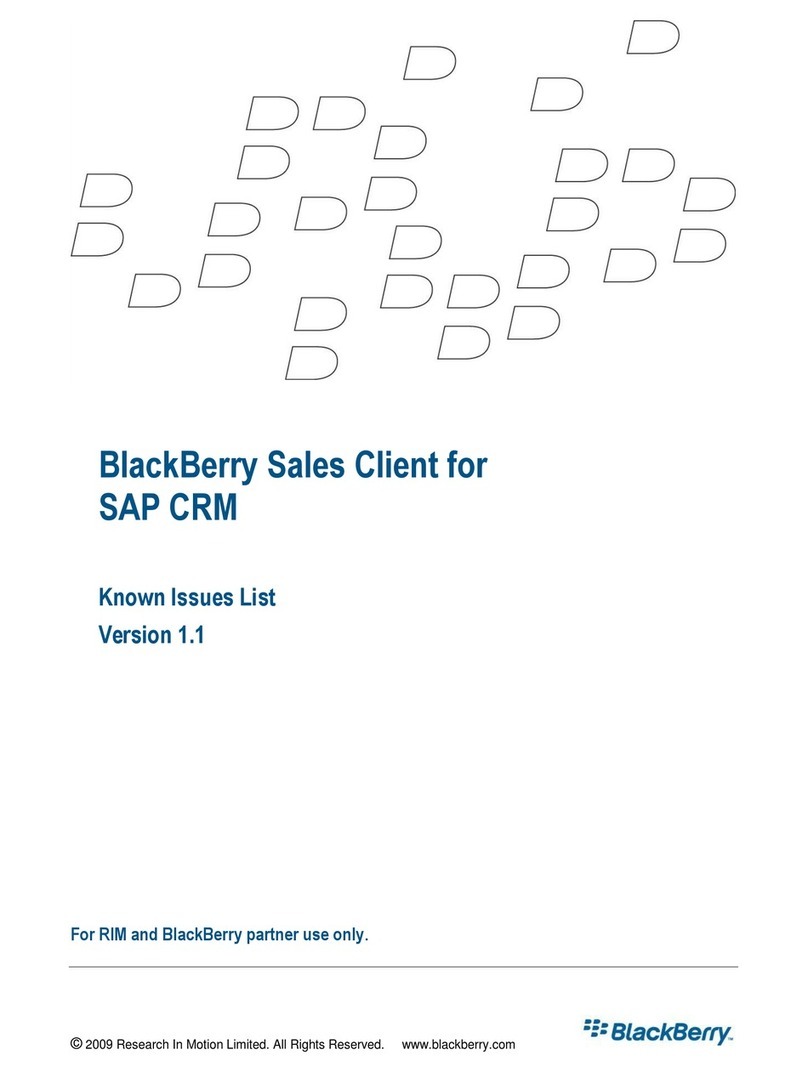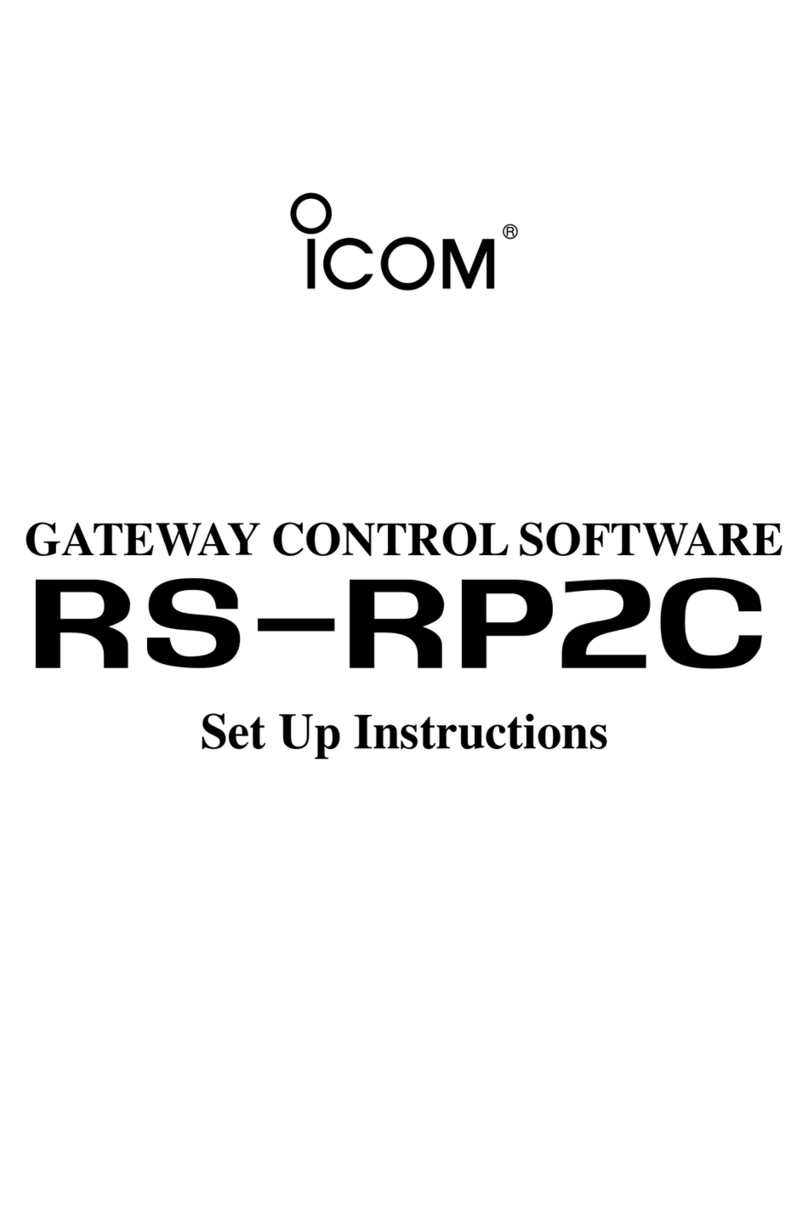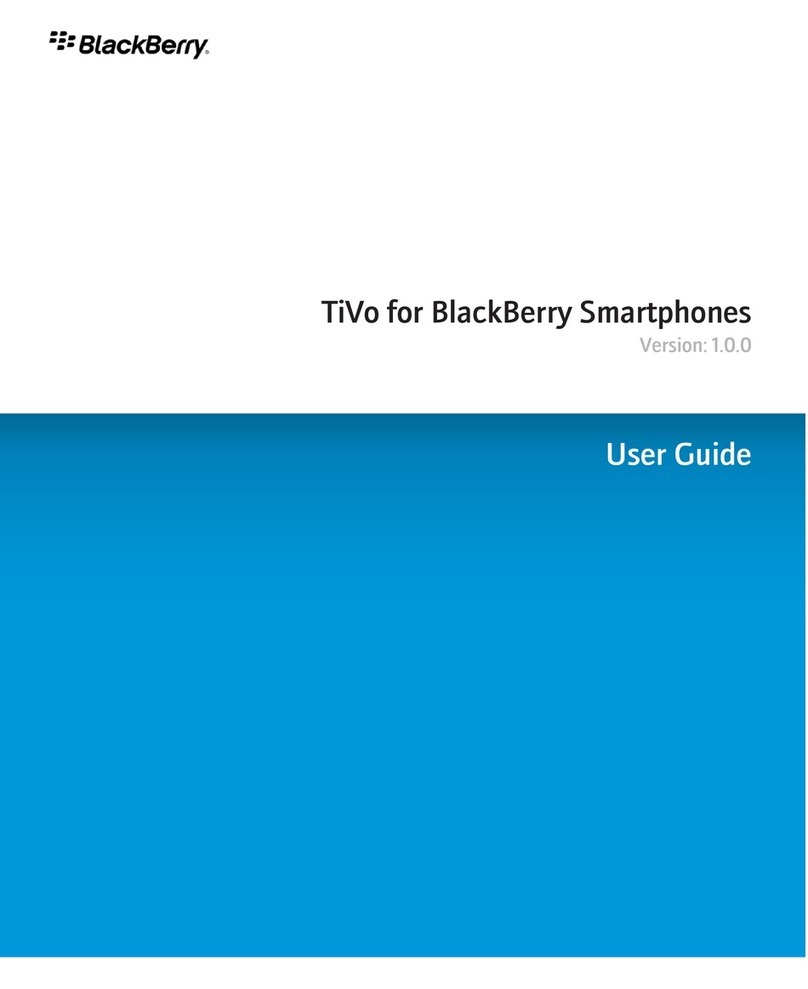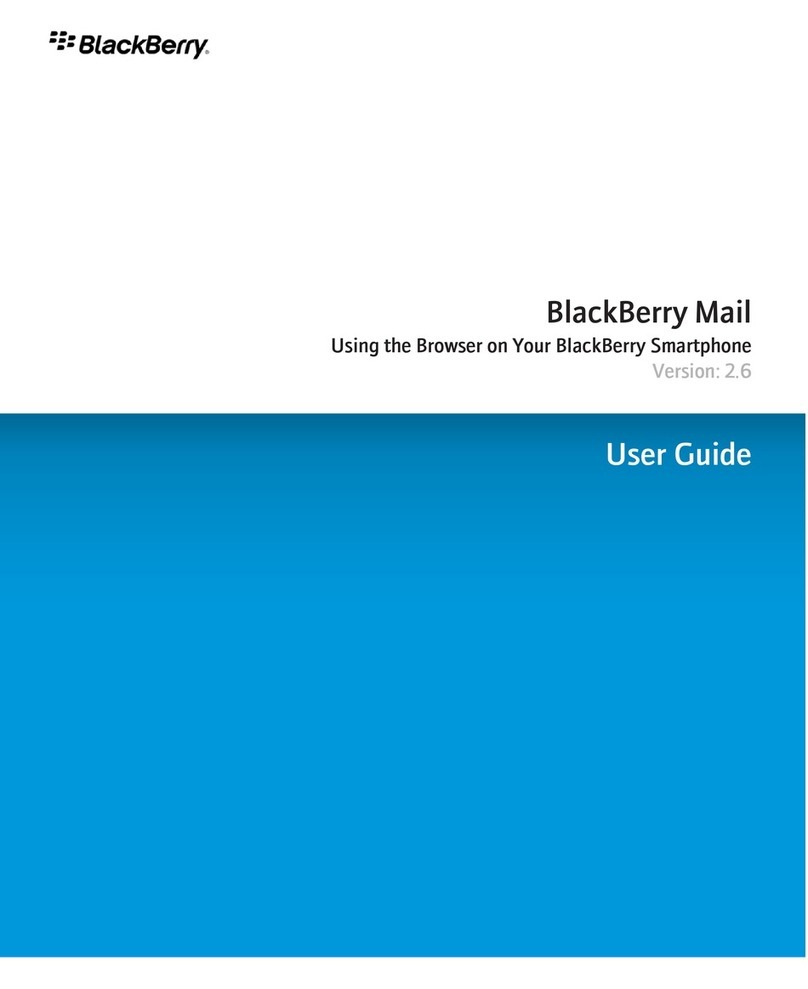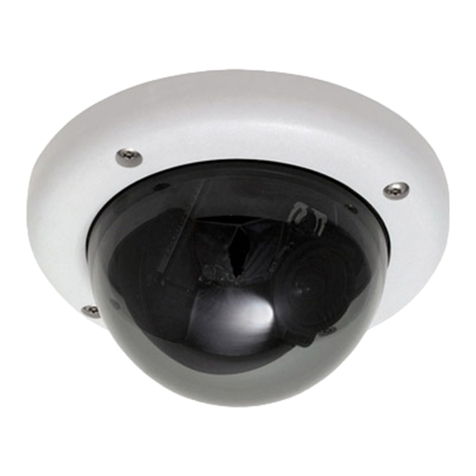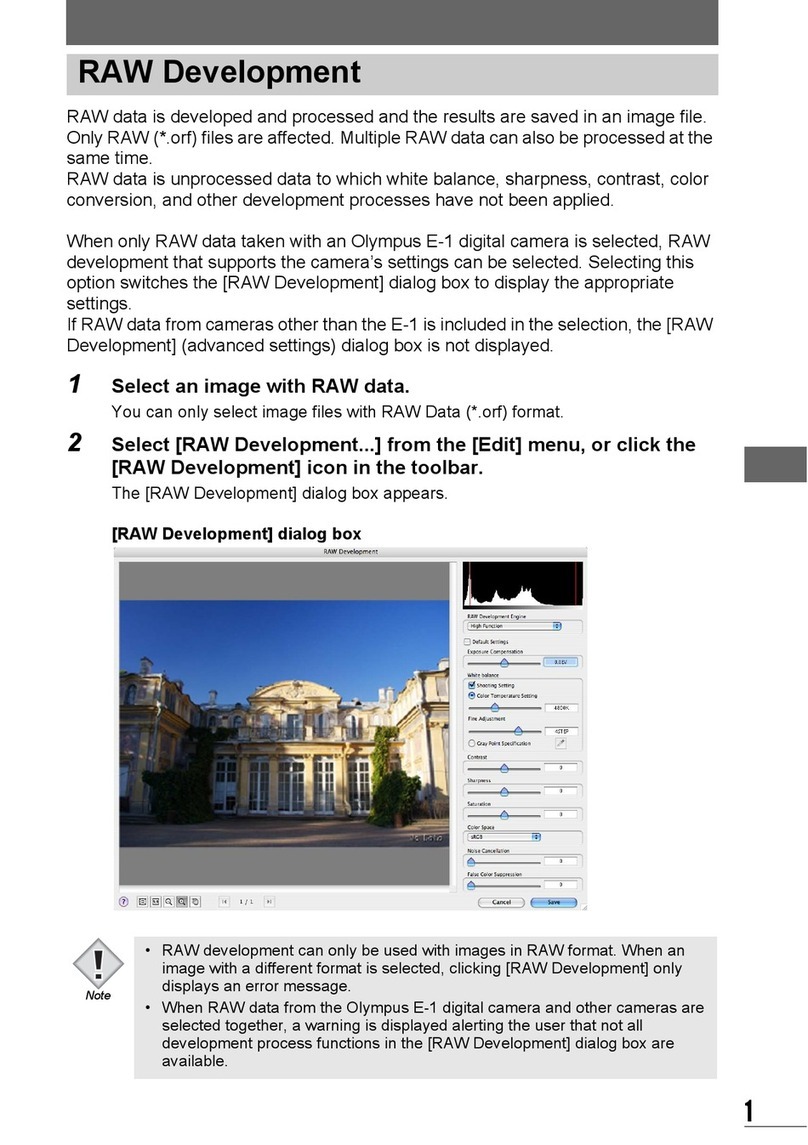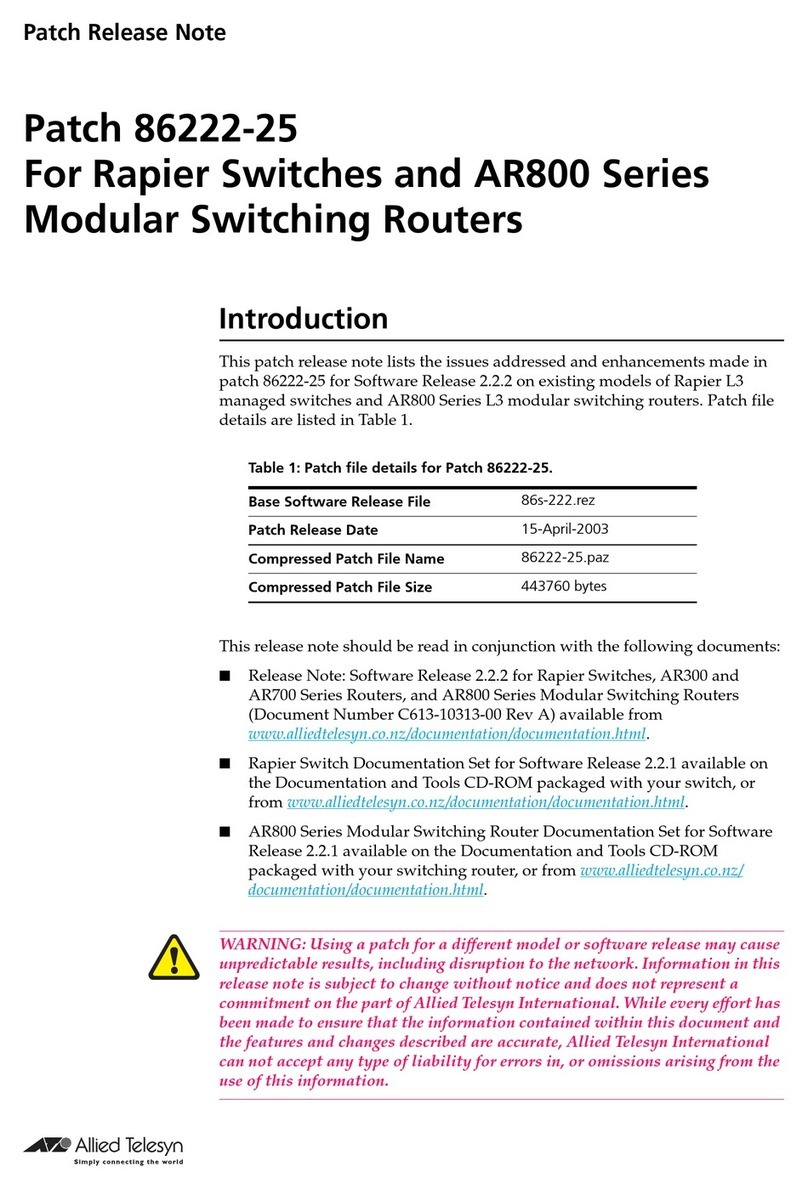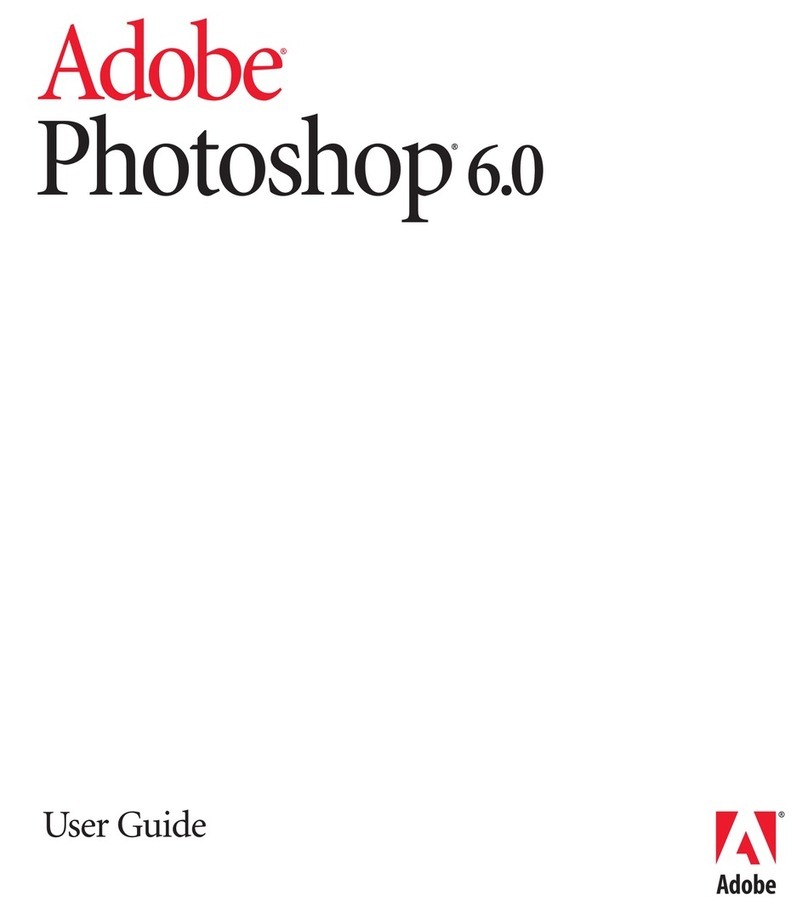Edison ED!SON WaMi Box User manual

ED!SON
Instrument Editor
English manual

2Ed!son –Instrument Editor
Contents
Contents....................................................................................................................................2
Ed!son –Instrument Editor.................................................................................................................4
Preface.............................................................................................................................................4
About these instructions.................................................................................................................5
Part 1: Basics.......................................................................................................................................6
1.1 Not as tough as it looks: Synthesizer & sampler crash course.................................................6
Subtractive synthesis.............................................................................................................6
Audio signal generation........................................................................................................8
Signal shaping.........................................................................................................................8
Modulators .............................................................................................................................11
Splits and multi-samples .....................................................................................................12
Sample loops ..........................................................................................................................13
1.2 Ed!son for advanced users......................................................................................................14
1.3 The WAMI BOX instrument architecture..............................................................................15
1.4 A word about priorities...........................................................................................................17
Part 2: Operation...............................................................................................................................19
2.1 The Ed!son user interface........................................................................................................19
General notes for the user..................................................................................................20
Playing sounds in Ed!son.....................................................................................................22
2.2 First steps and procedures......................................................................................................23
Preparations ..........................................................................................................................23
Importing sample and setting root key.............................................................................23
Setting parameters...............................................................................................................25
Adding splits..........................................................................................................................26
Editing splits..........................................................................................................................27
The special case of stereo samples....................................................................................28

Ed!son –Instrument Editor 3
Creating multi-samples.......................................................................................................29
Parallel editing of multi-samples.......................................................................................31
Creating velocity splits........................................................................................................32
Part 3: Reference................................................................................................................................34
3.1 Parameter reference.................................................................................................................34
OSC.........................................................................................................................................34
FILTER....................................................................................................................................36
OUTAMP................................................................................................................................37
LFO 1 / LFO 2 .......................................................................................................................38
EG 1 / EG 2 / EG 3 .................................................................................................................39
KBT.........................................................................................................................................41
Other parameters and controls..........................................................................................42
3.2 Menu reference........................................................................................................................44
File............................................................................................................................................44
Edit...........................................................................................................................................45
MIDI........................................................................................................................................46
Window....................................................................................................................................46
Help..........................................................................................................................................46
Part 4: Appendix...............................................................................................................................48
4.1 Glossary..................................................................................................................................48
4.2 Other keyboard shortcuts.......................................................................................................50

4Ed!son –Instrument Editor
Ed!son –Instrument Editor
Preface
Ed!son turns your WaMi Box into a powerful sampler. This offers a huge
advantage: You're no longer stuck with prefabricated soundsets or general-MIDI
pidgeonholes, but you can now finally develop your own instrument sounds.
Classical choirs, screaming-guitar meltdowns, or technoid synth -it's all possible,
and much more.
The simple fact that Ed!son lets you create a MIDI instrument out of any wave
file opens limitless possibilities. But that's not all. You can modify any instrument
sound using typical synthesizer elements such as filters, LFOs and envelope
generators.
It doesn't even matter if you're not an experienced sound designer. Ed!son is so
easy to use that even beginners can easily realize their sound ideas. Just give it a
try -after all, you can't break anything...
Have fun customizing sounds with Ed!son!

Ed!son –Instrument Editor 5
About these instructions
This documentation is based on the assumption that you have read the WaMi Box
manual, so that you are familiar with MIDI fundamentals and the basic operation
of your WaMi Box.
The following section contains a digression into the world of synthesizers and
samplers for beginners. There's also a section designed to get experienced users
up and running as quickly as possible.
Hint
Work your way through this documentation with your PC running. Try out what you've read
immediately. Many acoustic events cannot be described adequately in words.
This documentation is organized in four sections:
•Basics: Fundamental information which you must know in order to work with
Ed!son
•Operation: Ed!son's user interface and global functions, basic procedures
•Reference: Description of the individual operating elements/audio parameters
•Appendix: Glossary and keyboard shortcuts
Important note:
Certain Ed!son parameters can have a drastic effect on the volume of a sound, leading to unpleasant
acoustic surprises. Protect your ears and speakers by working at low volumes -at least until you've
gained some experience with Ed!son.

6Ed!son –Instrument Editor
Part 1: Basics
1.1 Not as tough as it looks: Synthesizer & sampler crash
course
Ed!son transforms your WaMi Box into a sampler, allowing you to play wave files
(also known as samples) as MIDI instruments. As you know, anything which is
audible can be recorded as a wave audio file using the WaMi Box and a sample
editor such as the Ed!son Wave. In other words, it's entirely up to you whether
you want to play a melody with a string section, a car horn, or the barking of your
dog.
The key to these infinitely versatile acoustic possibilities of the WaMi Box is the
Ed!son application. It's used to manage and transfer the desired wave files to the
WaMi Box's onboard memory, the sample RAM. What's more, complex
progressions of tonality and volume can be applied to the instrument sounds as
with a synthesizer. In order to systematically achieve acoustic results with Ed!son,
it's necessary to understand the fundamentals of how synthesizers and samplers
work. So, let's take a little excursion into the world of synthetic sound generators.
Subtractive synthesis
The WaMi Box creates an instrument sound when you hit a key on your MIDI
keyboard. That sound passes through three major development phases before it
reaches your ears: Audio signal generation, signal shaping and volume control.
Each of these three phases has its own parameters which can be adjusted across
wide ranges with the Ed!son.
In the WaMi Box, fast computer algorithms and DSPs handle tasks performed by
analog circuits in older synthesizers. Despite the huge technological differences
between old analog synthesizers and current sound cards such as the WaMi Box,
the fundamental architecture of these two worlds is very similar. The magic word
is subtractive synthesis, which is the technique of removing, or subtracting, high-
frequency components (the so-called overtones) from the original signal with the
aid of a low-pass filter. Once a signal has been generated at the correct pitch, it
passes through the filter and changes its acoustic character in varying degrees

Ed!son –Instrument Editor 7
depending on the filter setting. Next, a given volume progression is assigned to the
signal.

8Ed!son –Instrument Editor
The voice architecture of the WAMI BOX is based on subtractive synthesis.
Audio signal generation
Before you can hear a sound, it has to be generated. As you already know, the
WAMI BOX's instrument sounds are based on wave files. Playing a wave file is
not an art form -the cheapest sound cards will do the job. Things get interesting
when playing a wave file as an instrument voice, in other words in multiple voices
and at any (musically appropriate) pitch.
To put it briefly: Unlike other sound cards, our WAMI BOX has its own onboard
sample RAM which permits the instant reproduction of all of the samples stored
there at any required pitch. And that at up to 64 voices simultaneously!
Ed!son's audio signal generation parameters can be found in the OSC field.
Signal shaping
While the signal generation section described above is playing our sample in the
desired pitch, the signal can be altered and manipulated -or shaped -over a wide
range. This is performed by reducing specific frequency ranges. The frequency
above which these signal components are filtered out can be adjusted and is
Signal shaping Volume Volume
Filter
Audio signal generation

Ed!son –Instrument Editor 9
referred to as Cutoff in the Ed!son. Lowering the Cutoff will result in a duller
sound or an emphasis of the bass.
The second important filter parameter is the resonance, referred to in the Ed!son
as Q. Resonance is a form of feedback, in other words, a specified amount of the
output signal of the signal is returned to the filter input. The resonance effect can
be best explored by setting Cutoff low and Q high.
All signal-shaping parameters can be found on the Ed!son user interface in the FILTER section.
Volume control
The third and final development stage of an instrument sound involves the control
of its volume. This section is called VCA (Voltage Controlled Amplifier) in older
synthesizers. In addition to the global volume and panorama settings, the volume
can also be controlled dynamically.
As you probably already know, the volume of a sound is not necessarily constant.
Here are two examples: String sounds increase slowly in volume, while piano
sounds reach their maximum volume immediately and taper off slowly. These are
not constant volumes, but dynamic volume slopes. The following chapter contains
more information on this topic.

10 Ed!son –Instrument Editor
The OUTAMP section contains the Ed!son volume parameters.

Ed!son –Instrument Editor 11
Modulators
The synthesizer of our WAMI BOX can generate audio signals, shape them with
the aid of a filter and control their volume. So far, we have only been dealing with
static parameters -once set, they change the basic signal, but otherwise sound
fairly stiff and boring. Modulators help rectify this situation. Modulators are
control signals which can be set over a broad range to dynamically control
important audio parameters such as the pitch, filter frequency or volume. Two
important modulator types are available in the WAMI BOX: LFOs (low
frequency oscillators) and envelope generators (abbreviated as EG in Ed!son).
LFOs are present in practically all synthesizers and generate cyclical control
signals with a low frequency and adjustable waveform. If an LFO is used to
control an oscillator, for example, pitch fluctuations are the result, from slight
(organ vibrato) to intense (siren effect).
The WAMI BOX has two LFOs per voice.
Unlike LFOs, envelope generators do not involve cyclical control signals, but
specific progressions which are triggered by the key. A well-known example are
volume envelopes. These can be used to determine whether the volume increases
gradually, as with string sounds, or abruptly to the maximum value as in a piano.
Signal shaping Volume Output signal
Audiosignalgeneration
Volume
modulation
Filter modulationFrequence
modulation
Filter

12 Ed!son –Instrument Editor
In the WAMI BOX, four time and level parameters are available for each
envelope for the construction of complex modulation progressions.
Pitch, filter or volume: Ed!son provides individual envelope generators for each section.
Each of the three synthesizer sections, for example the filters, has its own
modulators. An example to clarify this: LFO1 can modulate the pitch and thus
create a sirenlike effect, while LFO2 controls the filter to provide a typical filter
sweep. At the same time, EG3 ensures that the tone develops gradually after the
key has been struck.
As you can see, modulators add a lot of action to the sound and add to the appeal
of synthetically generated sounds. Other sources of modulation are available to
the WAMI BOX in addition to LFOs and envelope generators. For example, the
touch dynamics (velocity) or the keyboard table position of a played note can be
applied as modulators in Ed!son.
Splits and multi-samples
With Ed!son, you can also create instrument sounds based on multiple wave files.
This is especially useful if instruments are to be recreated as authentically as
possible with a sampler. If you were to construct a piano or chorus sound using a
single sample, the instrument would not sound very realistic. The reason: Samples
tend to sound increasingly unnatural the further they are played from their original
pitch.
Multi-sampling is the name of a process in which several samples of an
instrument are recorded at different pitches and distributed over several zones of
the keyboard. An example: A complex synthesizer sound is sampled at a variety
of pitches (an octave apart, for example). The individual samples are then once
again assigned to their original pitches in Ed!son. Smaller tonal ranges for the
individual samples result in a more realistic sound for the multi-sample.

Ed!son –Instrument Editor 13
In Ed!son, the individual samples (and their keyboard zones) are referred to as
splits. A further use of splits is the realization of drum kits, i.e. a collection of
various drums and other percussion instruments. Strictly speaking, a drum kit is
nothing more than a multi-sample, several samples distributed across the keyboard
within an instrument sound.
Sample loops
All samplers, including the WAMI BOX, have a number of design limitations: The
number and size of the samples which can be stored on the WAMI BOX is more
or less limited the amount of sample RAM with which the sound card has been
equipped. Of course, memory chips are no longer one of the earth's most precious
resources, but careful budgeting is a good idea nevertheless -even though the
EWS can be equipped with up to 64 MB of sample RAM.
Sampler manufacturers have come up with a special trick which contributes
significantly to conserving sample RAM: the sample loop. If you have a closer
look at the samples of many instrument sounds, you will find that there's a lot of
activity at the beginning, which then goes over to a relatively constant progression.
A piano sound is a good example. Striking a piano key causes the sound to
develop very quickly. It then goes over to a constant tone (the vibration of the
string) which gradually decreases in volume and fades out.
We apply precisely this characteristic to shorten our samples and conserve
sample RAM. The fact that the sound decreases in volume is no problem, as we
can take care of that later with the volume envelope. The crucial point is that the
sound takes on a continuous quality after a given period of time. If only a small
section of this continuous-tone period is repeated for the entire period during
which the key is held, it is then possible to cut off the entire rat's tail of audio
information following it.
In practice, the sample loop part of the wave file, i.e. the part to be repeated
infinitely, can be defined in practice with Ed!son Wave or other suitable sample
editors.

14 Ed!son –Instrument Editor
1.2 Ed!son for advanced users
At the risk of telling you, as a power user, things that you already know about the
capabilities of the WAMI BOX and Ed!son team: In principle, the MIDI audio
signal generation of the EWS synthesizer corresponds to that of a sampler with
subtractive voice architecture. The wave files loaded in the sample RAM serve
as audio sources that can be played polyphonically via MIDI. A resonant low-
pass filter, a VCA and a comprehensive modulation section with several envelope
generators and LFOs are available for each individual voice. The velocity and
keyboard position (keyboard table) are additional sources of modulation. The edge
steepness of the filter can be toggled between 12 dB/octave and 24 dB/octave.
All this and more can be set and controlled using Ed!son.
Ed!son is not only used for the audio parameters, but also for the management of
soundsets. In addition to "normal" wave files, Ed!son also imports files containing
sample loop settings. Ed!son Wave or other suitable sample editors such as
WaveLab 2.0 or Sound Forge 4.0 can be used to create wave files with sample
loops. Needless to say, multi-samples can also be created with Ed!son. This is an
important feature for the construction of drum kits or for achieving maximum
authenticity in instrument sounds (such as pianos or choruses). The multi-edit
mode implemented in Ed!son permits parallel editing of several individual samples
or keyboard zones.
Finally, you can position the MIDI instrument voices created with Ed!son on the
stereo outputs of your EWS as described in "The Wavetable & MIDI Handbook".
As you can see, Ed!son and the WAMI BOX deliver everything that you can
expect from a good sampler.

Ed!son –Instrument Editor 15
1.3 The WAMI BOX instrument architecture
The WAMI BOX instrument architecture consists of three levels. The bottom
level is the sample, based on a file in wave audio format. The recording and audio
processing of samples is not performed in Ed!son, but in Ed!son Wave or another
sample editor. The finished wave file is then imported into Ed!son. One or more
loaded samples make up an instrument, together with the pitch, filter, volume and
modulation settings. These can be saved separately in TTI (TerraTec Instrument)
format.
One or more instruments make up a soundset. In addition to instruments, a
soundset can also contain variations and drumkits. Soundsets, i.e. collections of
instruments, can be saved in their own file format with the ending TTS (TerraTec
Soundset).
The Set Manager is used for the management of the soundsets created in Ed!son.
While the TTI format is primarily used to exchange individual instruments or the
construction of new soundsets, finished soundsets in TTS format are used during
a sequencer session or music production. Use the Set Manager for this purpose,
as it permits up to eight soundsets to be loaded into the memory of your WAMI

16 Ed!son –Instrument Editor
BOX simultaneously. In other words, look upon Ed!son mainly as a tool for the
development of new soundsets.
A few more points: TTI and TTS files contain the complete audio data in addition
to the parameters. This is especially practical if you would like to exchange
TTI/TTS files with other WAMI BOX users, or make them available via the
Internet. Ed!son is also able to import 94B-format soundsets. You can thus use
soundsets from other sound cards with Dream DSP with your WAMI BOX. It's
not possible to save in this format, however.
Note
GM/GS-compatible drumkits (available via MIDI channel 10) cannot currently be edited with
Ed!son. You can, however, create drumkits of your own by simply combining a variety of drum
sounds as a multi-sample.

Ed!son –Instrument Editor 17
1.4 A word about priorities
To summarize the terms instrument, program, bank, variation, soundset and
priority, we'd like to explain the relationships of these terms to one another.
Priority-level
Program
SoundSet
Bank/Variation
0
63
127
A soundset consists of a field with a maximum of 128 * 128 = 16384 instruments.
The individual positions of the instruments within this field are clearly defined by
the program number and the bank or variation number. As a rule, instruments are
located in Bank 1; variations which use the same samples or that are closely
related by theme are in other banks.
Mixing of sets As several sets can be loaded in the WAMI BOX, overlaps may
result in the program and bank numbers. Priorities were introduced for this reason.
The priority is applied in the event of identical program or bank numbers, and the
instrument with the highest priority in the set is played. If you would like to

18 Ed!son –Instrument Editor
replace a number of instruments in a GS set with your own, you can do this by
simply adding the program and bank numbers of the instruments to be replaced to
the instruments in your own set. Next, use the Set Manager to load both sets into
the WAMI BOX and increase the priority of your own set. Now you can play all
GM files with your own supplemental sounds without having to edit the GM/GS
set itself. The following graphic shows which instruments will finally be played
from which set.
Priority-level
Program
SoundSet
Bank/Variation
0 63 127
In our example the bottom soundset is a GS set with the priority 0, the middle is a
GS set with a number of variations and priority 63, and the upper is a custom set
with only a few instruments and the priority 127. The top level of the second
graphic shows which instrument will be played from which set.

Ed!son –Instrument Editor 19
Part 2: Operation
2.1 The Ed!son user interface
The Ed!son user interface corresponds to the appearance of an analog
synthesizer. This is a good analogy, since Ed!son's fundamental architecture is
basically identical to that of a synthesizer. Instrument sounds are created and
edited on a single Ed!son screen. Ed!son has only a small number of menus which
are mainly required for global settings, or for the file management of the
soundsets and instrument sounds.
Beginners shouldn't worry about the large number of controls. A closer look at
Ed!son's user interface will show that many parameters and function groups are
present several times. The envelope generators, for example, are present three
times, but only need to be understood once. The same goes for the LFOs and the
velocity/slope/offset parameters. The actual functions of these individual
parameters are covered in Part 3 of this documentation, the reference section.
Ed!son is divided into logical sections with regard to its appearance and functions.
First, there's the basic elements of subtractive voice architecture, pitch (OSC),
filters (FILTER) and volume (OUTAMP). Next, there's the modulators, in this
case 2 LFOs and three envelope generators (EG 1 to EG 3). The keyboard tables,
which are used for keyboard-related modulations, are located below the third
envelope.

20 Ed!son –Instrument Editor
It's no coincidence that the Ed!son user interface is modeled after a synthesizer.
General notes for the user
As the Ed!son is equipped with specially-designed controls, we would like to give
you a few general hints for working with the program as efficiently as possible.
Nearly every parameter has a so-called sandwich button, which is generally
used to set numerical values. To change the parameter in small increments, click
on the upper or lower half of the button to raise or lower the value accordingly.
Numerical values can be set quickly and efficiently with the sandwich buttons.
For coarse adjustments, either click in the middle of the button or click it with the
right mouse button. This mode is marked by a small, double-headed arrow. Move
the mouse while holding the mouse button to quickly change the parameter over a
wide range.
This manual suits for next models
1
Table of contents
Popular Software manuals by other brands
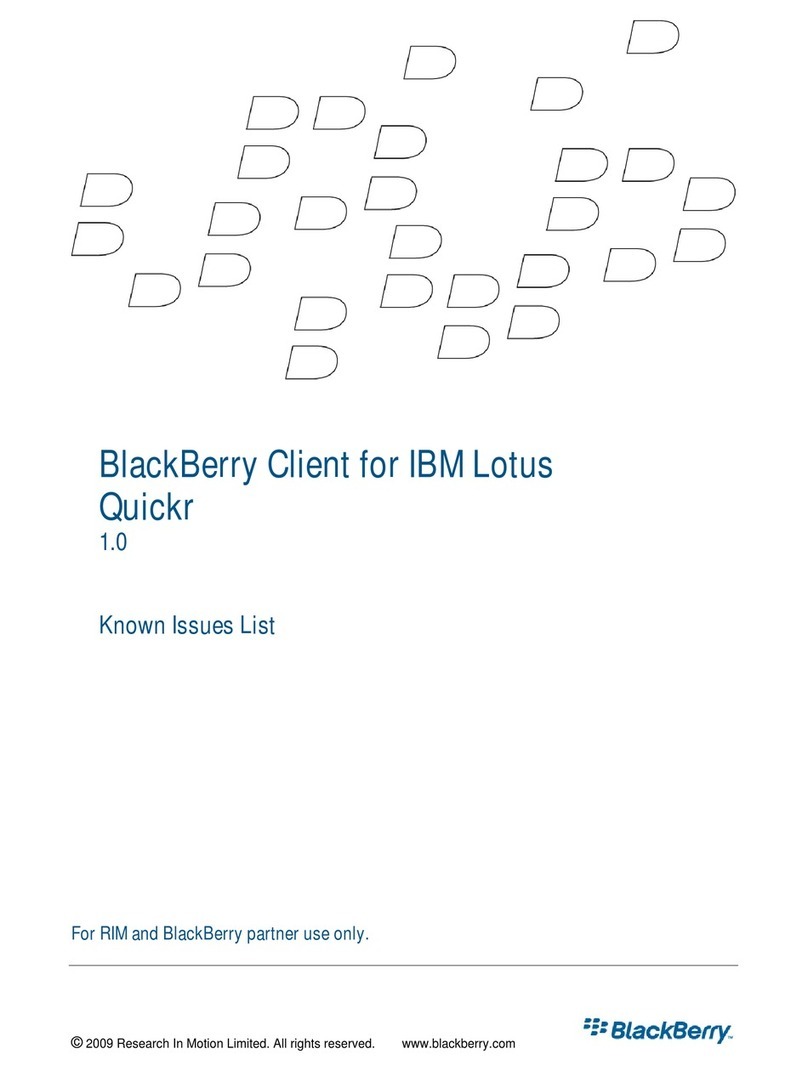
Blackbe;rry
Blackbe;rry Client for IBM Lotus Quickr 1.0 manual
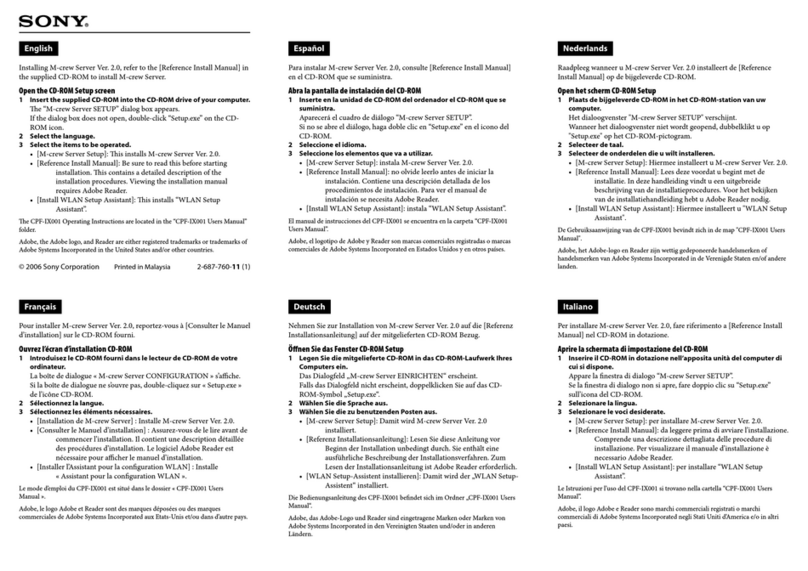
Sony
Sony CPF-IX001 - Wireless PC-Linked Audio System installation guide
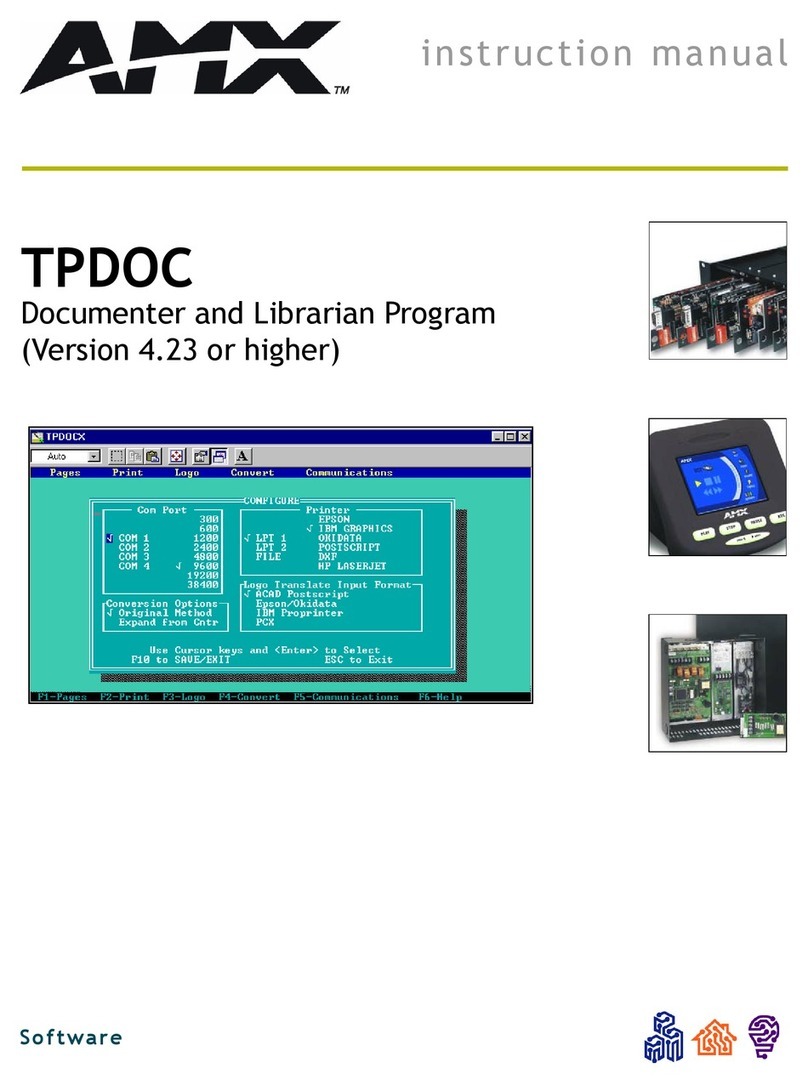
AMX
AMX TPDOC instruction manual
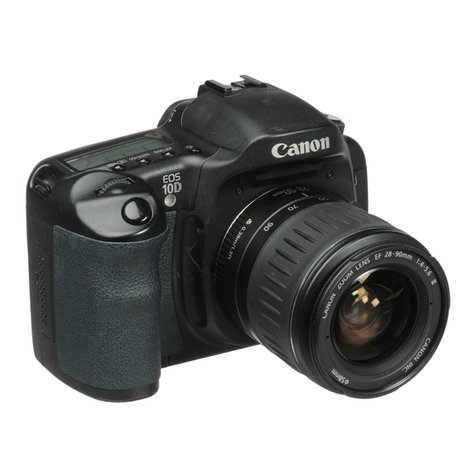
Canon
Canon EOS 10D Digital instruction manual
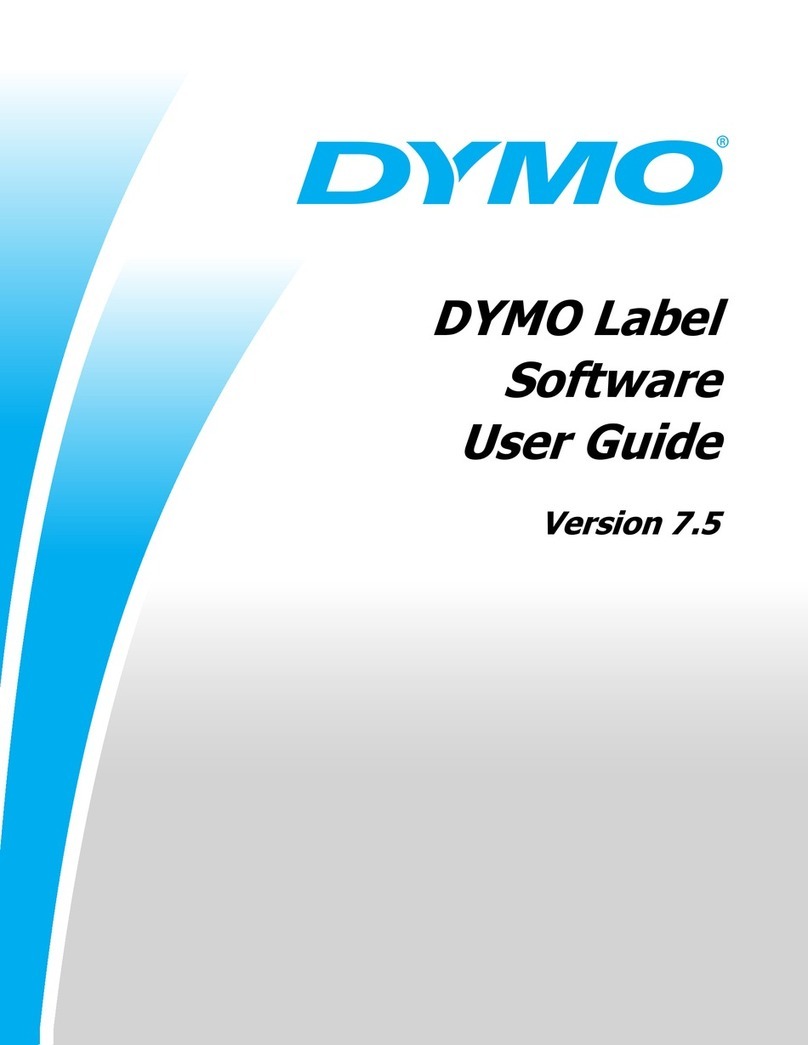
Dymo
Dymo Version 7.5 user guide
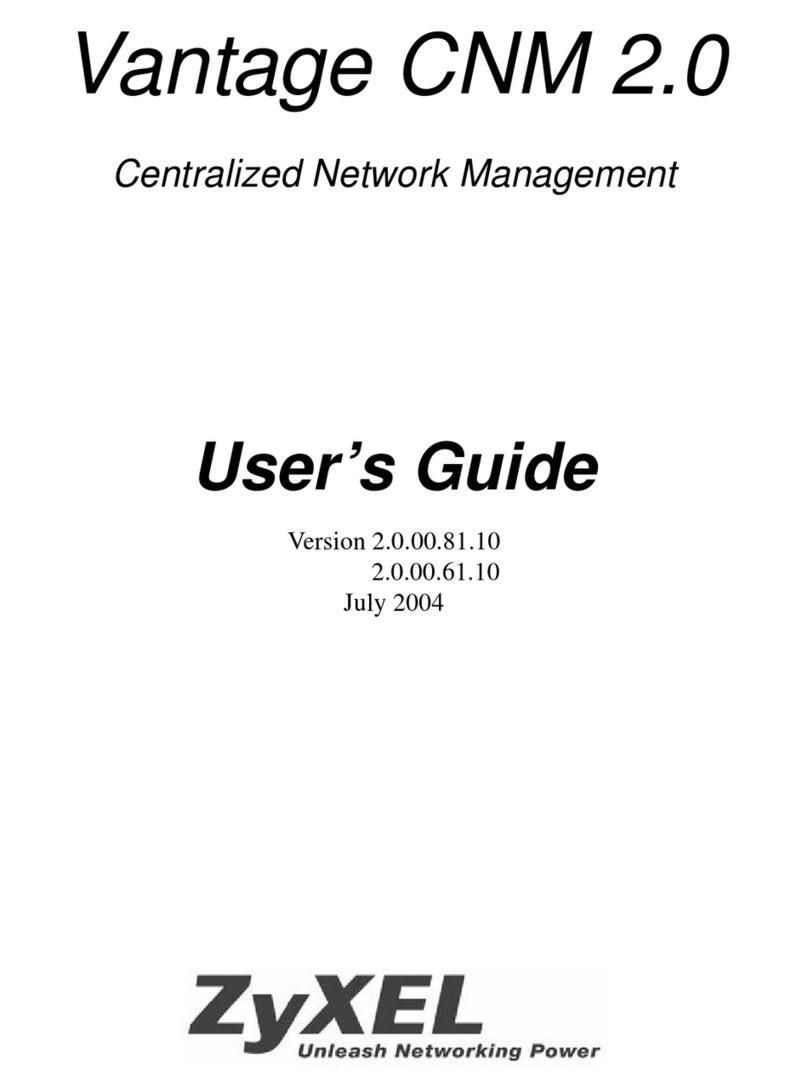
ZyXEL Communications
ZyXEL Communications VANTAGE CNM 2.0 - user guide
